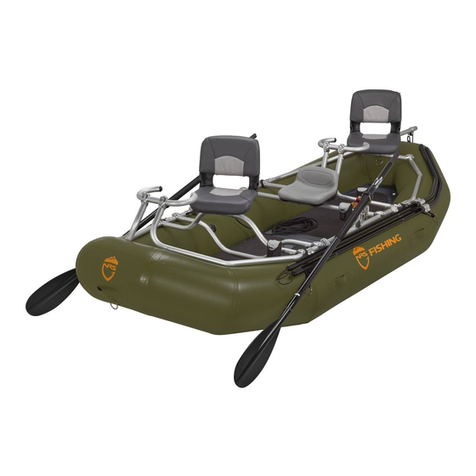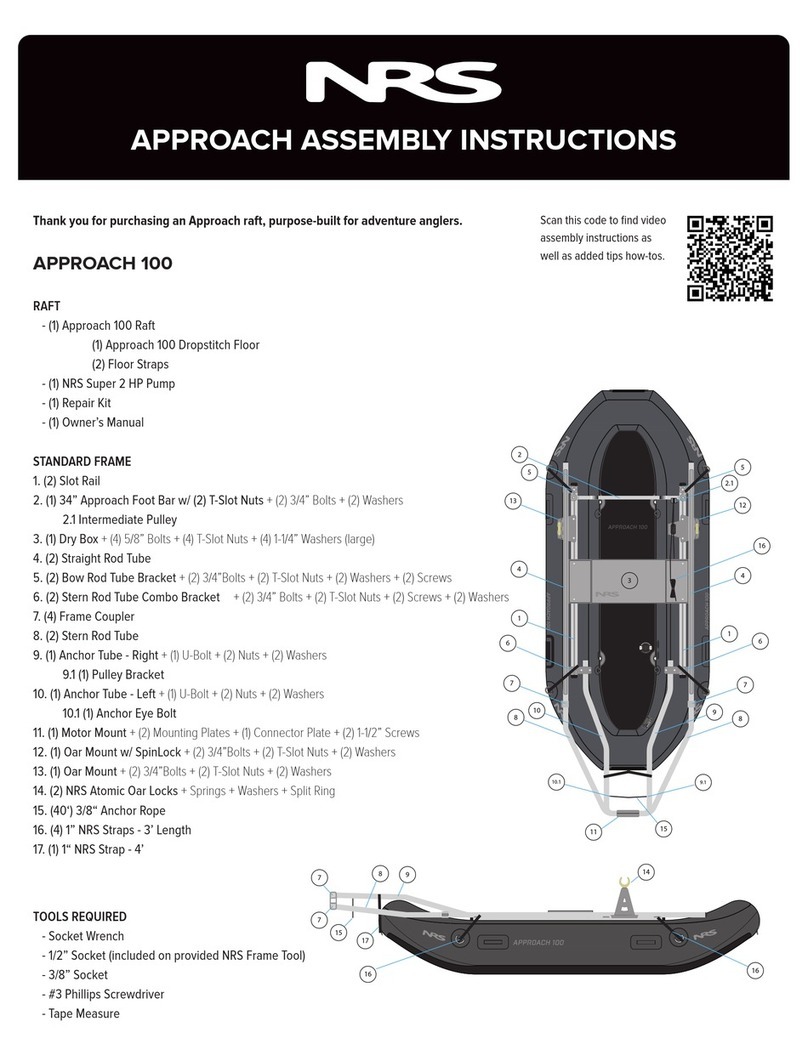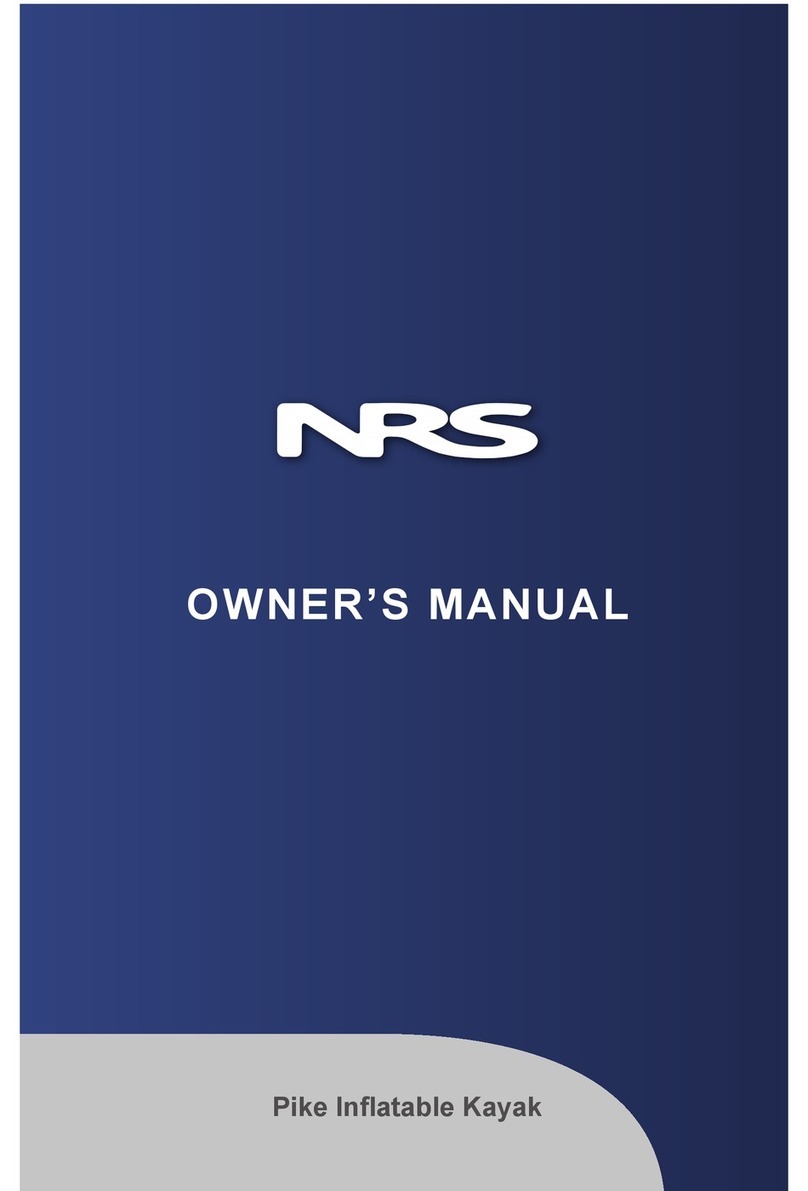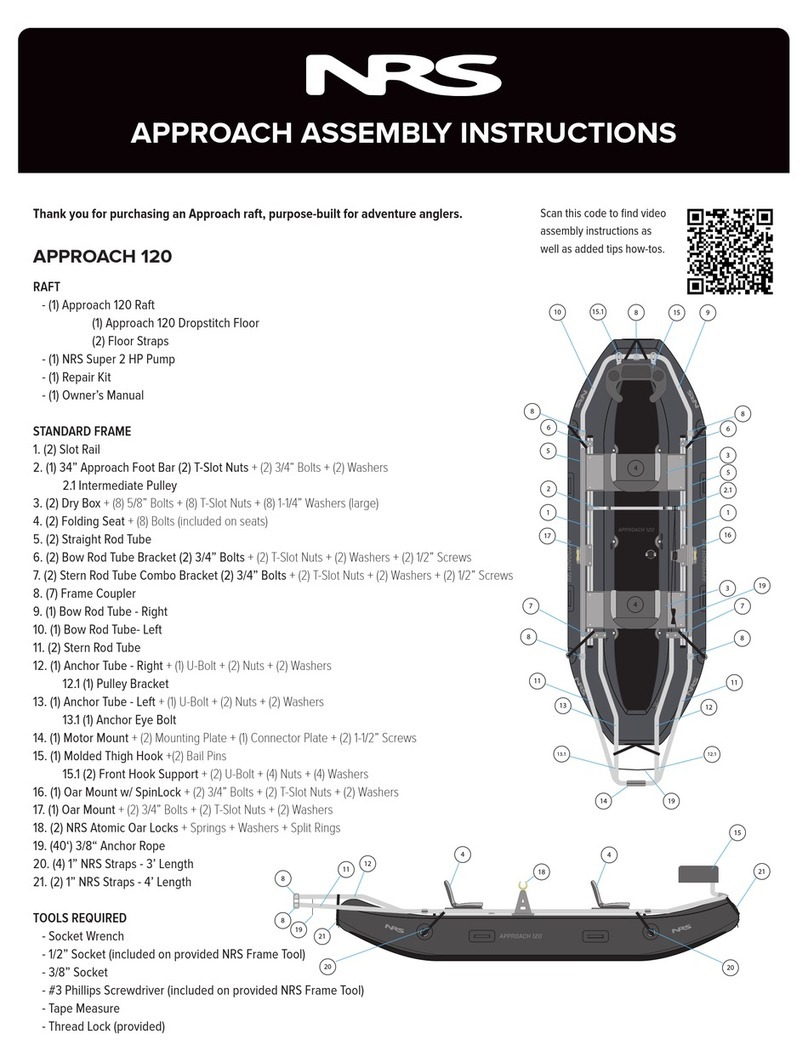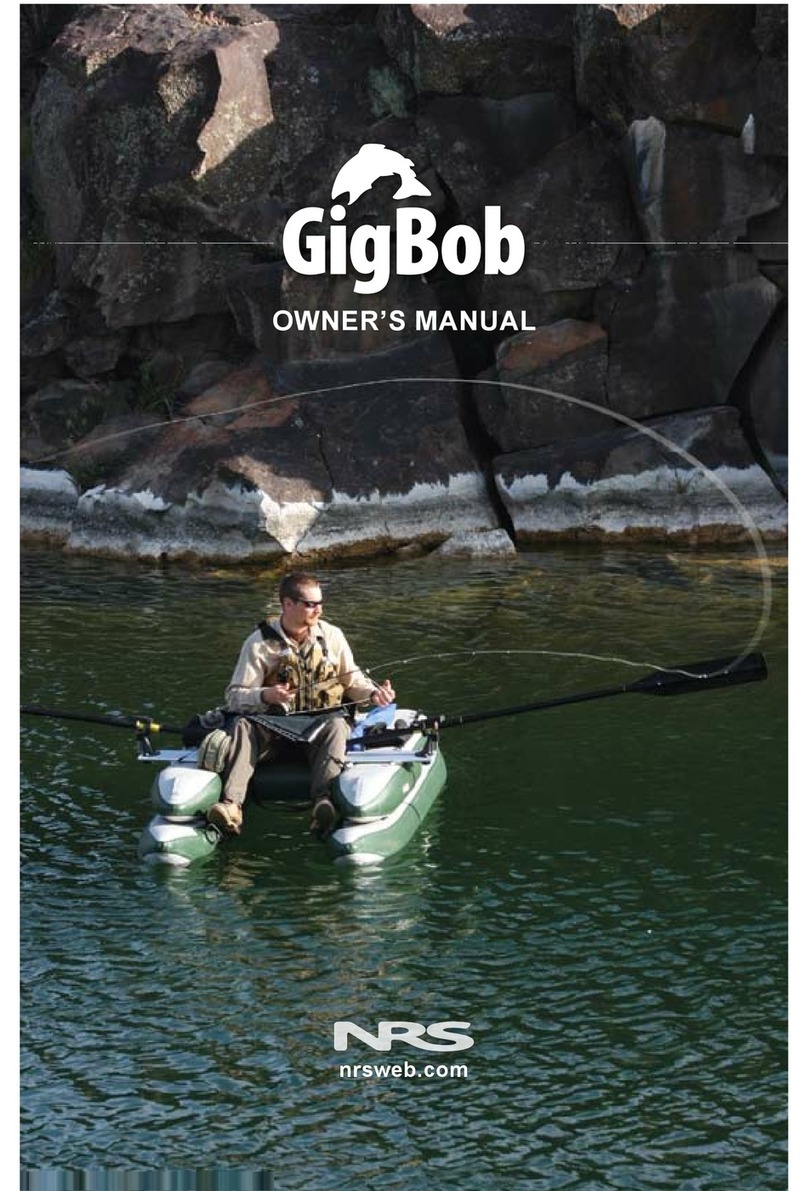
800.635.5202 | nrs.com | 3
When deflating a chamber, simply push the valve stem in and turn it counterclockwise to lock
it open. It’s best to close the valves when transporting the deflated boat uncovered in wet
conditions in order to keep moisture out of the chambers.
FRAME
Your Drifter’s frame is as innovative as the hull. In the center section, our patented LoPro™
system lets you move and adjust the foot bar and oar mounts.
We’ve included an assembly DVD and printed instructions. First, watch the DVD to familiarize
yourself with the work flow. Then, grab a buddy and put your Drifter together. Be sure to read
and closely follow the printed instructions; they contain detailed descriptions and assembly tips
not covered in the DVD.
If you’re rolling your Drifter up for transport or storage, it’s easy to take the frame out in three
sections. First, remove the dry box, then loosen the four U-bolts from the side rail ends, and lift
out the center section. You can remove the front and rear casting platform section by opening
the ClampIT Frame Attachments securing them.
VALVES
Leafield C7 Valves
To open the valve, first unscrew the valve cap, then press down on the spring-loaded valve
stem and turn it counterclockwise. The valve stem will now be locked in the open position,
allowing air to move freely in and out through the valve. To close the valve, push down on the
valve stem and turn clockwise. The stem will pop back up, sealing the valve shut. In the closed
position, you can still pump air into the chamber, but when you remove the pump, the valve
will not allow air to escape. When you’re finished, screw the plastic valve cap back on to keep
water and dirt out of the inner valve.
Cleaning the Leafield C7 Valve
If the inner parts of your valve become dirty, the rubber seal may not seal fully against the valve
body, thus allowing air to escape. You can clean the inner valve parts to restore the airtight seal.
Your repair kit contains a flat aluminum valve wrench that you can use to remove the valve from
the boat. Threads are: clockwise to tighten, counterclockwise to loosen. It’s easier to loosen the
valve with the chamber inflated. The outer half of the valve unscrews from the inner half. When
you remove the outer half of the valve, take care not to lose the inner half inside the chamber.
With the outer half in your hand, push down and turn the valve stem counterclockwise. This lifts
the rubber seal o the valve base. Use a cotton swab, or
something similar, to remove any dirt and grime that has built up on the rubber seal.
Hand-tighten the outer valve piece back into the valve base. Inflate the chamber fully, and
then use the valve wrench to completely tighten the valve. Make sure none of the drop-stitch
threads interfere with sealing the inner and outer valve pieces.
MAINTENANCE AND CLEANING
Proper care and maintenance will improve your Drifter’s appearance and longevity. Clean
and inspect the boat after each use. We recommend you coat your boat with 303 Aerospace
Protectant (available through NRS or your local dealer) every few months during the season,
and before long-term storage, to protect against UV damage and degradation.
Take care to keep moisture from getting inside the air chambers. Water can enter the
chambers during in-the-field repairs or if the valves are left open during wet weather. If you find
that moisture and mildew have accumulated in your boat’s air chambers, the chambers must
be aired out. Remove the valve of the aected chamber and pour out any liquid water. Run the
hose of an electric air pump or vacuum cleaner exhaust through the valve hole. Turn the unit on
and allow the air to circulate into the chamber and out through the valve hole for several hours
until all the moisture is gone.






